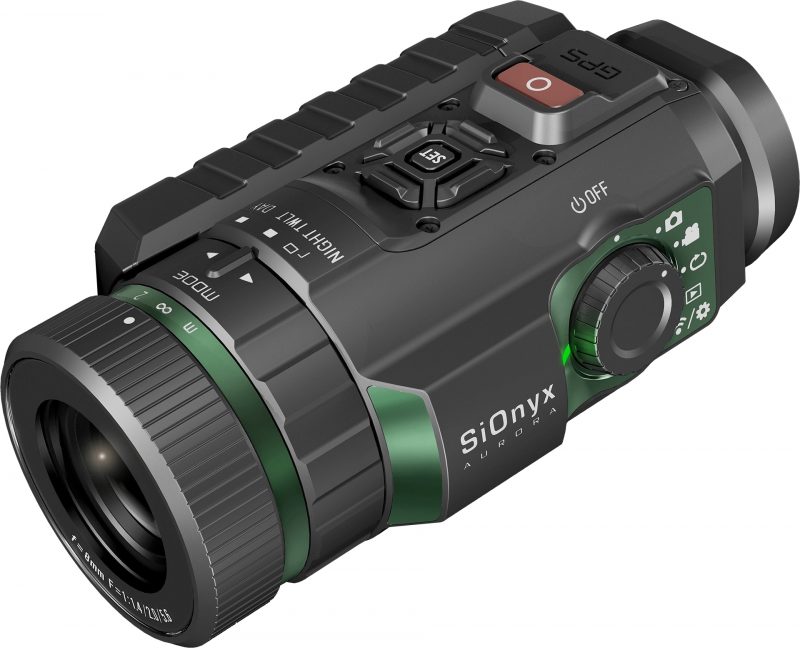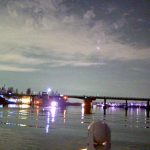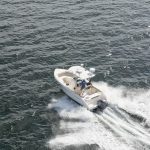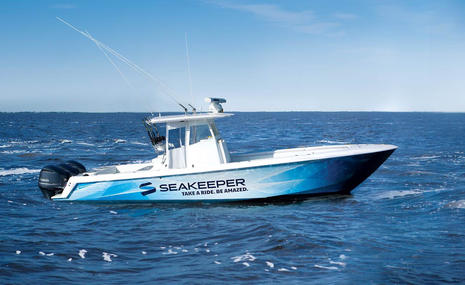SiOnyx Aurora night vision camera demo ride
At the Fort Lauderdale International Boat Show I got to take a demo cruise with SiOnyx to see their Aurora night vision camera in action. What I saw during our cruise of the New River and Atlantic Intracoastal Waterway was impressive, but also illustrated some limitations.
The $800 Aurora is based on a 1-inch 720p CMOS sensor that is sensitive to the infrared light (IR) that’s not normally visible. This allows the Aurora to display night vision in color. SiOnyx explains that there is a large amount of naturally occurring IR, so even in extremely low light situations the camera should still be able to improve upon what the naked eye sees. The Aurora has three modes: Daylight, Twilight and Night; the first two both utilize the sensor’s visible light sensitivity while Night uses the IR sensitivity.
The Aurora is a full-featured action camera including a GPS receiver, compass, and WiFi radio in an IP-67 water resistant case with a MicroSD slot for recording still images and 720p video. The camera must be manually focused because of the auto-focus performance in low light conditions, according to SiOnyx, though they do hope to be able to find a workable auto-focus system.
- A scene along the New River as captured by an iPhone
- The Aurora was much better at providing visible detail
The images above show first what an iPhone was able to capture and then what the Aurora was able to capture. Our ride started on the New River and proceeded out to the Intracoastal Waterway and then south. Turning the f1.4 lens in any direction on the new river mostly revealed greater detail than I was able to appreciate with the naked eye. However, in areas with significant light sources the Aurora’s ability to show details was reduced. There were other challenges; for example, reading signs proved much easier with the naked eye than through either the electronic viewfinder (EVF) or on my iPhone running the SiOnyx Aurora app while paired to the Aurora over WiFi.
- The mangroves south of the Port Everglades inlet from an iPhone
- The mangroves south of the Port Everglades inlet from the Aurora
Our demo ride headed south of the Port Everglades Inlet down into the Mangroves for as dark a demo opportunity as possible in this generally well-lit area. The Mangroves are indeed pretty dark but there’s still a lot ambient light available so I don’t think I’ve yet had a chance to fully explore the capabilities in truly inky black, moonless conditions.
If you’ve used a handheld thermal camera like a FLIR Scout you’re probably aware that thermal imaging doesn’t work through glass so you’re not able to use thermal handhelds from inside a boat. But IR does pass through glass so it’s possible to use the Aurora from a pilothouse.
- Area outside of a marina captured with an iPhone
- Same area outside of the marina captured with SiOnyx Aurora
Over the next few weeks, we will be moving Have Another Day south on the Tennessee Tombigbee Waterway and I expect to have opportunities to test performance in some very dark conditions. The two pictures above are taken from a marina along the Tenn Tom where there were minimal other light sources. The slight glow on the horizon is the sun several hours after sunset.
Overall I am pretty impressed with what the Aurora is able to deliver as compared to either the naked eye or an iPhone. I don’t have a FLIR Ocean Scout available, and I would like to make that comparison as well. But during the demo there were clearly conditions in which the Aurora really shines and others where it had less to contribute, and I think it’s easy to justify the $800 list price in exchange for what you receive.




















Hi Ben, I’m wondering if you tried switching to the Twilight mode when too much light made reading that sign hard? I’m assuming that Twilight mode optimizes that big CMOS sensor for low natural light and therefore might be quite useful in certain conditions (plus you could snap a photo of the sign for closer perusal).
Also please check that it works while being charged with a USB cable. I imagine some boaters might want to temporarily mount an Aurora in a good “look out” position and then control/monitor on a tablet, sort of like I did once with a FLIR First Mate:
https://panbo.com/first-mate-ms-thermal-camera-flir-does-it-again/
SiOnyx still has the boat show special going on. Enter the code: FLIBS20 and get 20% off the $799 MSPR.
I haven’t tried to switch Twilight at those times, though that’s a great suggestion. Next time I have the opportunity I will. We’re at anchor tonight so I should be able to some full darkness testing.
I have checked, the camera works while being charged and I’m told it’s an IP-67 USB female connector as well so that’s certainly good news, though personally I’d still love to see a permanently mounted version of the camera.
Ben S, I looked at this when it first came out. There are numerous U-tube videos posted by users that show dramatic night vision effects. We plan on getting one but I want to see if the first issue has any updates. Several unfavorable comments arise because people either mistake this for a thermal imager -it’s not. It is a reflected ir imager that can be really improved with an ir flashlight. I am interested to see how your tests work out.
Gary
Gary,
I hadn’t considered the IR flashlight as an option. I’ll order one up and see what kind of difference that might make in performance.
Ben